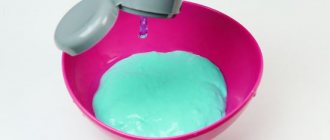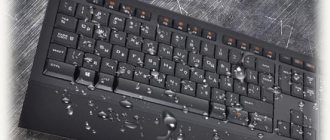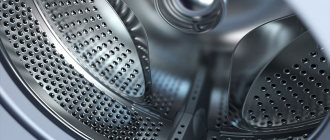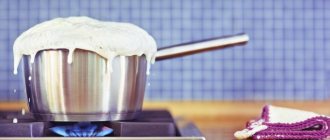How many times have your drawing or writing been interrupted by the dry, rough sound of a “dead” marker? If you think your marker has ended prematurely, fear not—dead markers can usually be brought back to life (temporarily, at least) using one of a few simple methods. Whether you use water-based markers, erasable markers, or even permanent markers, the solution to dry markers is often as simple as soaking the markers for a few minutes.
There can never be too many markers for children. They draw with them all day long and turn to their parents for help when they stop writing. What to do when you don’t have time to buy new markers, but your child asks to draw? Try to restore them! How, you ask? This article will help you understand this issue and return your baby’s smile.
Children's markers in most cases are water-based. They are much safer than other colored markers. But they are also found based on alcohol. Let's look at ways to restore these two components.
Look closely at the packaging to determine the type of dried markers. Only then begin recovery.
Before taking drastic measures, try the following option for restoring felt-tip pens. Using pliers, pull out the rod. Inside the marker there is a base that saturates the felt-tip pen with color. Turn it over and push the end back into place. If this doesn't help, then try the following tips.
Water-based markers
You can return bright colors to markers using clean water. Prepare a container for work by pouring one glass of warm water into it. You can also use cold liquid to restore felt-tip pens. But ink dissolves much faster in hot water.
Remove the caps from the markers and dip the tips into the water. Make sure they are completely immersed in liquid. Leave them in this position for 5 minutes.
Pull the markers out of the water. Wait for the water to drain, then transfer them to a dry cloth. There should be no moisture remaining on the tip of the felt-tip pen. Check this every hour - try writing with a felt-tip pen on paper. If there are no water stains along the colored line, then the marker is suitable for drawing.
To prevent markers from drying out quickly, be sure to put the caps on after use. If your child has lost them, tie a piece of the bag around the tip of the marker. Secure its edges with a rubber band.
How can I refill a whiteboard marker?
Restoring permanent markers
Modern manufacturers add isopropyl alcohol or acetone inside the rod.
Therefore, you can use alcohol or nail polish remover as a dressing. Water is not suitable for restoring permanent markers
.
Interesting materials:
How to obtain an EDS for IP registration? How to receive an EDS by email? How to obtain an EDS for a non-resident? How to obtain digital signature online step by step instructions? How to get f9 in MFC? How to receive a federal supplement to your pension? How to get a federal hunting license? How to get Form 9 on the government services website? How to get the YouTube 2022 tick? How to obtain hydrogen gas?
Types of markers and ways to “reanimate” them
A marker (from the English mark - mark), or as it was previously called - a "Magic Marker" pen - is a tool for writing and drawing with paint. The marker has another common name - felt-tip pen, which is a thinner prototype of the marker. The marker was invented at the beginning of the 20th century; at that time it vaguely resembled a modern marker; it consisted of a pen and felt filled with ink. After this discovery, the marker was modernized over the course of half a century, and in 1953 mass sales of markers began, which quickly became popular and conquered the market.
Today, markers are distinguished by composition and purpose. According to the composition they are distinguished:
- Alcohol. Alcohol markers are the most popular. They can be used to apply both translucent tones and dense, opaque ones. When applied to a surface, the alcohol evaporates quickly, so the color appears almost immediately in its final form. An image made with an alcohol marker is water-resistant and can only be washed off with alcohol. They are used to apply inscriptions and designs on paper, plastic, iron, wood and other materials.
- Water based. Water-based markers have a wide range and color transparency. The main difference is that the color layer, after drying, is not dissolved by the subsequent layer. Mixing colors and smooth transitions from one to another are impossible in this case. Water-based markers use up ink faster. The main use of water markers is working on paper and cardboard.
- Acrylic. They have dense, opaque colors. The peculiarity of these markers is that before the paint dries, you can create transitions and smoothly mix colors. After drying, a durable film is created that is not affected by water. Their main difference is the ability to apply an image to almost any surface. Acrylic-based markers are most widely used for exterior decorative work.
By purpose they are distinguished:
- General use. These are water- or alcohol-based markers that are used in almost all industries. These also include permanent markers, which leave a deep mark that remains on the surface for a long time. Their traces are not affected by moisture and are difficult to erase, except with alcohol or special means. They are usually used to apply inscriptions and images on any surface: wood, metal, plastic, paper and others.
- Text. Accordingly, they are designed to work with text, or rather to highlight important points in the text, therefore this type of markers is called a text highlighter. They have a translucent base that allows text to stand out.
- Artistic. They are used by artists, decorators and designers in their work. They are a modern alternative to paints, have bright, saturated colors, and can also be shaded (to create a smooth transition) while the marker layer is still wet. Once dry, the markers are not washed off with water.
- Professional. This group includes markers created for a specific area of production. For example, markers that can withstand high temperatures, markers for marking in hard-to-reach places and others.
- Automotive. These markers mask scratches on a car due to the fact that they leave a thick layer of paint that blends with the color of the car. They are usually made on an enamel base.
The shelf life of markers is approximately 2-3 years, after which they dry out and color saturation sharply decreases.
We know 5 ways to revive a marker and extend its service life:
Method 1: Store markers horizontally so that the base of the felt-tip pen is evenly distributed along the entire length of the refill.
Method 2. If you store markers in a stationery cup, turn them over at least once a week.
Method 3. This method is suitable for “revitalizing” a water-based marker. Pour 100-150 ml of hot or warm water into a bowl, place the markers in the water with the tips down, wait 5-6 minutes, then dry the markers for 10-20 minutes and close the cap.
Method 4: A water-based marker can be “revitalized” with vinegar. To do this, drop a few (1-2) drops of transparent 9% vinegar onto the tip of the marker and dry it for 3-5 minutes, close the cap.
Method 5. This method is suitable for “revitalizing” an alcohol marker. Pour 30-50 ml of alcohol into a bowl, place the markers in the alcohol with the tips down, wait 1-3 minutes. Then dry it for 1-2 days, tip up.
Markers, highlighters, felt-tip pens and other writing materials can be purchased in the Profupakovka online store, in the stationery section.
We prepare a special dressing from simple ingredients
There are two ways to prepare a special dressing. So, what to refill the marker with?
For the first option, you will need: water, gouache, ink, powder, PVA glue, two tablespoons of sugar and a half-liter container.
First you need to fill the vessel one third with water. Next, gouache and powder are added to the water. Beat thoroughly and slowly add mascara. To prevent the dressing from turning out too black, it is important not to overdo it. After this, you need to add 20 drops of glue to the mixture and mix the mass thoroughly again. Sugar is added to achieve homogeneity. The mixture is whipped again - the dressing is ready!
For the second method you will need: two containers, a ballpoint and gel pen, a touch-corrector, nail polish, acetone, hairspray, brilliant green.
First you need to pour the bar corrector into one container and then let it dry. Grind the dried mass into powder and pour into another container. Ink from a ballpoint pen and ink of the desired color from a gel pen are also added there.
Add brilliant green and nail polish of a suitable color to the resulting mass. All this is fixed with hairspray and mixed thoroughly. Next you need to add nail polish remover or acetone. That's all. The gas station is ready!
The important thing is that these refills are moisture resistant.
How to make an alcohol marker?
You take alcohol and an old marker or felt-tip pen (This is the most banal way). You pour alcohol into a glass. The more, the paler the color will be. Then you pull out the writing “nose” from the marker and throw it there. ... How to start drawing if you are already an adult?
- topics
- flowers
- materials
- the techniques used.
27 Feb
2022 Interesting materials:
What foods cleanse the gallbladder? What food products can be transferred to a pre-trial detention center? What foods lower blood pressure? What professions belong to the economic sphere? What works are included in the Cthulhu mythos? Which tablet manufacturers are good? What gaskets are best? What fog lights should I put on a viburnum? What birds live in the Wrangel Island Nature Reserve? What birds remain to spend the winter in Ukraine?
Water markers
Almost all modern children's markers are water-based. This is done to provide bright, rich colors while still being safe for the youngest artists. In addition, such markers are easily washed off from clothes and any surfaces, do not have an unpleasant odor and can be stored for quite a long time even with open caps. A drawing made with such a felt-tip pen lasts a long time and does not fade in the sun. But, as you know, nothing lasts forever. Sooner or later, even such markers cease to please their owner.
Methods for refilling a felt-tip pen
To be completely honest, all of the above methods do not refill, but rather dissolve the dye already present in the felt-tip pen, that is, they actually help if the felt-tip pen has dried out. What to do when the dye runs out?
You can try adding printer ink to the refill or use various household dyes, such as brilliant green, manganese, etc. But remember that felt-tip pens filled in this way will not last you long. And their price is quite low and does not justify such efforts. All these methods are more suitable when it is not possible to purchase a new felt-tip pen at this very moment.
Additionally, some alcohol markers are not designed to be refilled. If you try to bring them back to life, you will simply fail. This information is usually indicated on the packaging. Most often these are expensive art markers or, on the contrary, cheap Chinese ones, in which all the dye instantly flows out.
The number of “refills” in any case will depend on how much dye was originally in the felt-tip pen. If the manufacturer immediately saved money, then such a felt-tip pen will not serve you for long, no matter how hard you try.
If it contains alcohol
Alcohol markers are rarely used by children, as they have a strong, unpleasant odor and can be hazardous to their health. In addition, they dry out quickly enough and are much more expensive than water-based ones. Alcohol-based felt-tip pens and markers are used in offices, industry or creativity. As a rule, the inscription made with such a felt-tip pen can be removed using an alcohol-containing solution.
Ready solution
If you do not dare to experiment, but at the same time do not want to buy new art supplies and are still wondering what to refill the marker with, we suggest you use a ready-made solution. The fact is that many manufacturers sell ready-made refills for markers. They are special inks of different shades and are supplied in convenient jars with a spout, and are also additionally equipped with a dispenser for more accurate measurement of the substance. This is a great solution for refillable markers.
Sets of felt-tip pens have been extremely popular with both children and adults literally from the moment of their invention, namely since the 60s of the twentieth century. Unlike pencils, they do not require constant sharpening, and their color is far superior in brightness and saturation to a pencil “trace.”
Felt pens are one of the most popular products for children's creativity.
Today, there are several types of stationery products on the market, such as:
- The usual sets of felt-tip pens;
- Whiteboard markers;
- Markers for writing on disks, glass, fabrics;
- With washable ink, etc.
All of the above markers have one common and, unfortunately, negative property: they dry out quite quickly, their color becomes pale and inexpressive. Even if you purchase the most expensive products, this will not guarantee that markers or felt-tip pens will not lose their writing properties. The deterioration in writing quality is due to their design: the dye that flows from the reservoir to the felt tip dries out over time as a result of complete consumption of the paint solvent. Thus, a marker that still contains a lot of coloring pigment stops writing and has to be thrown away.
But it turns out that it is not at all necessary to throw away old markers; you can try to “reanimate” them at home, and in a very simple way. So, what can you do to refill them and restore them to their former brightness?
For small children, it is better to buy washable markers
What to do?
- First way. Pour alcohol into a marker cap or another small container and place the marker there. Leave it there for a while until it collects the required amount of liquid.
- Second way. Carefully drill or pierce a hole with a hot nail, through which pour a few drops of alcohol with a syringe. Then solder it or install a removable plug.
Attention! When using this method, do not use hot objects, as highly flammable alcohol vapors may collect under the lid. Simply heat a nail or any other sharp object slightly.
Determining the required ink volume:
If you are still faced with the need to refill a marker, then first of all find out how much ink the marker can hold. This value may vary for each brand of art markers. Also pay attention to ink bottles; most of them have special measuring divisions that you should use when filling markers.
Copic Marker Capacity:
Copic Ciao – 1-1.5 cc. cm
Copic Sketch – 2 cu. cm
Copic Classic – 2-3 cu. cm
Copic Wide – 3-4 cu. cm
how to restore (charge) a dry felt-tip pen
Or you can pour alcohol into some kind of cap or cork and place a marker in it with the tip down. Then the alcohol will be absorbed into the marker itself and you won’t have to drill it. You will need to wear gloves and protect your work area with an old rag while using this method. You need to dry the markers so that the ink on the tips is no longer watered down, but not so much that you stop writing. This may take up to 24 hours. To check the writing ability of a marker, it is best to test them on a piece of paper every few hours.
As a last resort, try buying ink. While the above methods are effective, they will only work if there is some ink left inside the marker. For erasable markers that are completely dry, meaning both the tip and the inside of the marker are dry, you may need to purchase ink.
Source: callbollonez.ru











